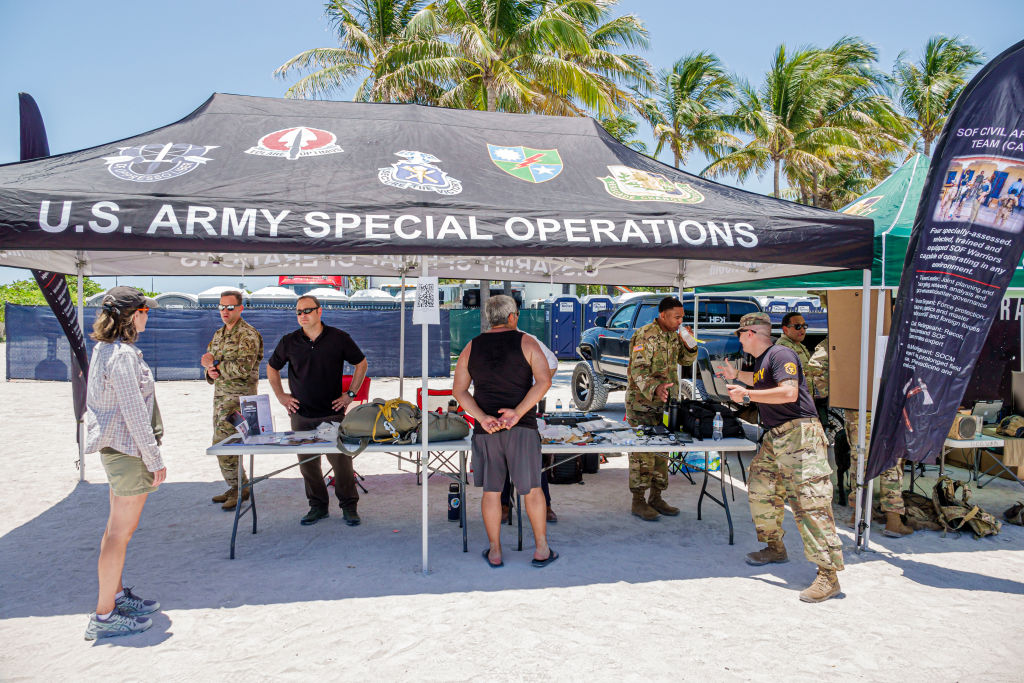The US Defense Department is planning to reduce the capability of special operations to make up for poor recruiting for conventional forces. It’s a head-scratcher, for sure. We’re talking about the most highly trained, skilled, and experienced fighting soldiers, sailors, and airmen being degraded in numbers to satisfy other priorities. This initiative further proves that the Biden national security team is out of touch with reality.
They are reducing the end strength of a critical element of the US warfighting capability when the military services fail to meet new-hire objectives. It’s counterintuitive. Nonetheless, back in May, during a Senate Armed Service Committee Subcommittee on Emerging Threats and Capabilities hearing, cutting the size of the US special operators was the focus of the testimony. Senator Joni Ernst (R-IA) shared her thoughts about cutting Special Operations Forces (SOF). Ernst pointed out that the skills and dedication of the SOF warfighters have had an enduring impact on “dismantling terror networks, disrupting plots against the homeland, and removing jihadist leaders from the battlefield.”
Not Getting the Message on Cutting Special Operations
Since that hearing, the Pentagon has doubled down on its plan to reduce the size of America’s SOF capability. There is a notion in the five-sided building that emphasizes moving away from counterterrorism in the Middle East to great power competition with Russia and China. In his October 5 article in The Wall Street Journal, “Army Plans Major Cuts to Special-Operations Forces Including Green Berets,” Gordon Lubold explained the US Army’s thinking:
“The Army is cutting about 3,000 troops, or about 10% from its special-operations ranks, which could include so-called trigger-pullers from the Green Beret commando units who have conducted some of the nation’s most dangerous and sensitive missions around the world, from the jungles of Vietnam to the back alleys of Baghdad. The reductions would enable the Army to rebalance toward the large conventional ground forces needed in a potential fight in Asia.”
What the advocates of trimming America’s most highly trained forces don’t get is that SOF troops are resident in the Army, Air Force, and Navy and are crucial in conventional warfare. Taking down force structure in one military service impacts the capability of the joint force. However, the vision of the US Army, for example, does not appreciate the joint capability of Delta Force, Air Force Combat Controllers, Navy Seals, and Recon Marines under Fleet Marine Force to operate behind enemy lines to disrupt and defeat a land force.
“So, the Army is in a moment of transformation where we are really pivoting from Coin (counterinsurgency) and CT (counterterrorism) to large-scale combat operations. So, we’ve got to transform our force structure,” Secretary of the Army Christine Wormuth told reporters at an October 4 media round table. What few Defense Department leaders fail to explain when they throw the “transformation” word around is exactly what they’re trying to transform it into – and Wormuth is no exception.
 Though Wormuth didn’t mention China or Russia in her talk with the media, what other “large-scale combat operations” might there be? “I’m very concerned about the pacing threat of China simultaneously with the reduction of SOF. When you look at the things that would deter China, SOF are on the tip of the spear… It’s unclear that this administration understands the value of SOF. Otherwise, they wouldn’t be proposing cuts,” Senator Ted Budd (R-NC) said, according to Micaela Burrow at the Daily Caller.
Though Wormuth didn’t mention China or Russia in her talk with the media, what other “large-scale combat operations” might there be? “I’m very concerned about the pacing threat of China simultaneously with the reduction of SOF. When you look at the things that would deter China, SOF are on the tip of the spear… It’s unclear that this administration understands the value of SOF. Otherwise, they wouldn’t be proposing cuts,” Senator Ted Budd (R-NC) said, according to Micaela Burrow at the Daily Caller.
Military Officials Not Persuasive
As if to assuage the concerns of congressional leaders and critics of the move to reduce SOF force structure, the Pentagon had an explanation. “Mostly, the Army plans to cut special-operations troops in supporting roles such as psychological warfare, civil affairs, intelligence operators, communications troops, logistics, and other so-called enablers, US military officials said,” Lubold explained in The Wall Street Journal. Think about that for just a second. These warfighting specialties support the special operations to ensure the trigger-pullers have triggers to pull, ammunition to shoot, intelligence to know who to shoot, and communications to understand where and when to shoot. That’s why they are called enablers.
Other congressional leaders are not buying the military’s decision to downsize SOF capability. Congressman Mike Waltz (R-FL) summed up his views in an October 5 press release. He stated:
“I am stunned and appalled by reports indicating the US Army will cut 3,000 troops from its special operations ranks as a means to manage their worst recruiting crisis since the Vietnam War. The Secretary of the Army is trying to claim she’s only cutting support troops like intelligence analysts, psychological operations troops, and logistics personnel. In reality, these support troops are critical to our special operators’ success in remote locations in 60-70 countries on any given day all over the world.”
Cutting any force structure when the US faces historically ominous challenges is short-sighted at best and, at its worst, blatant incompetence. If recruiting is the problem, solve the recruiting problem. Don’t take down the most capable fighting force the Army and the military services have to meet personnel accession shortfalls.




